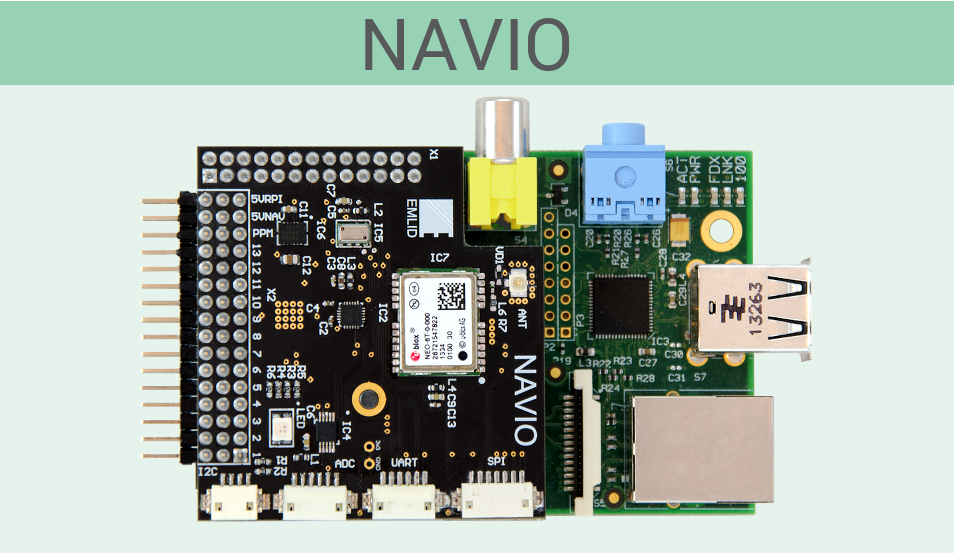Navio - autopilot card for the Raspberry Pi

Hi Habr!
Introducing Navio - an expansion card for the Raspberry Pi designed to control airplanes, copters, boats and other robots. We have already gone from inspiration, prototyping and testing to a successful campaign for collecting pre-orders on Indiegogo.
')
Previously, we worked on a commercial autopilot on a microcontroller, and each time adding a new functionality, we thought, “But in Linux you could just hook up libxyz for this.” However, at that time there was no convenient hardware platform on which to develop, so we came to the decision to make Navio.
Raspberry was chosen as the most common and inexpensive Linux-based card that has a huge community of users who have done many projects with a detailed description. These projects include copters, airplanes, boats - their creators had to use various shields and breakouts, which eventually led to work with a huge pile of wires. Navio eliminates this and is a compact and convenient solution.
Unlike current autopilot platforms on microcontrollers, on the Raspberry Pi + Navio, you can program in almost any language, easily add additional load - you can connect a camera and a WiFi whistle and get FPV out of the box. Also, the Raspberry Pi has great performance, which can be useful when processing GPS data or when recognizing images.

On board
- U-blox NEO - GPS \ GNSS receiver. Two versions to choose from: multisystem NEO-7M or NEO-6T with the possibility of obtaining phase measurements for processing.
- MPU9250 - accelerometer, gyroscope, magnetometer for determining orientation.
- MS5611 - pressure sensor for height calculation, also allows you to measure temperature.
- ADS1115 - 4-channel ADC for measuring battery power and connecting analog sensors.
- PCA9685 is a 16-channel PWM generator for controlling servomotors, 13 channels are connected to standard servo connectors.
- MB85RC - FRAM, non-volatile memory, up to 1 trillion write / erase operations.
- RGB LED - for simple visual display of statuses.
- PPM input - to connect a receiver that allows you to transfer control to manual mode from the remote.
- DF13 connectors - Pixhawk-compatible connectors UART, I2C, SPI. Allow you to connect a radio modem, airspeed sensor and more.
- Also, a GPS \ GLONASS antenna and a set of wires with DF13 connectors will be sent to those who supported our campaign on Indiegogo complete with the board.

Code
In order to quickly get to work with Navio, we have prepared drivers for sensors and are now working on tutorials that will show how to use them.
Crowdfunding
We decided to conduct a crowdfunding campaign in order to assess the demand for our device and collect the necessary amount for the production of the first large batch of boards at the plant. More information can be found on our Indiegogo page:
Navio on Indiegogo
Unfortunately, everything is only in English, but I will be happy to answer any questions in the comments or by mail to info@emlid.com
Source: https://habr.com/ru/post/227445/
All Articles